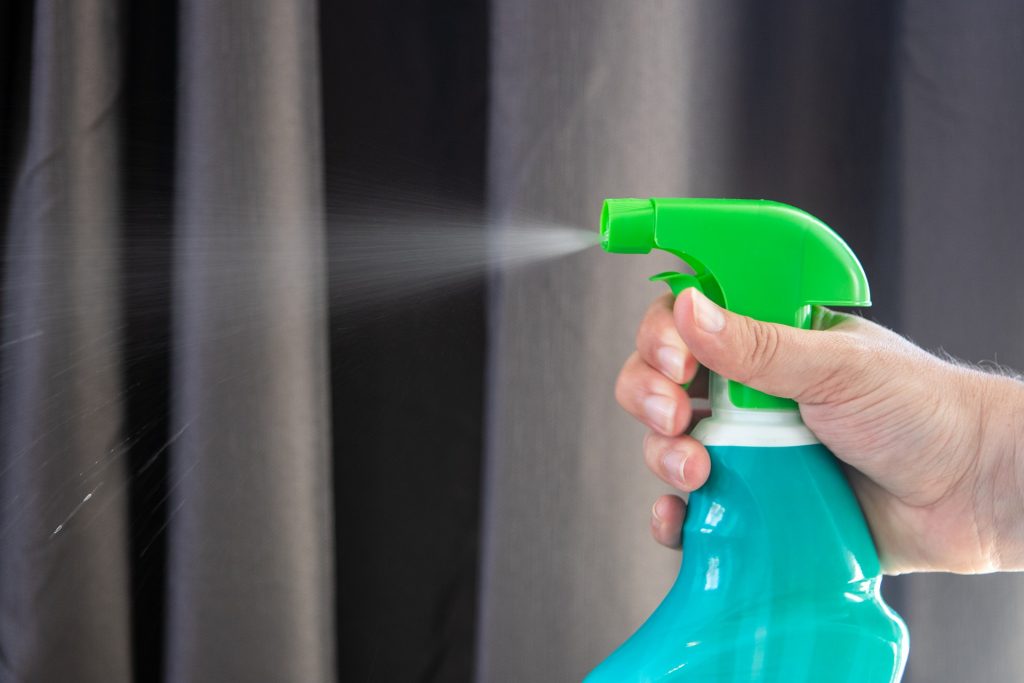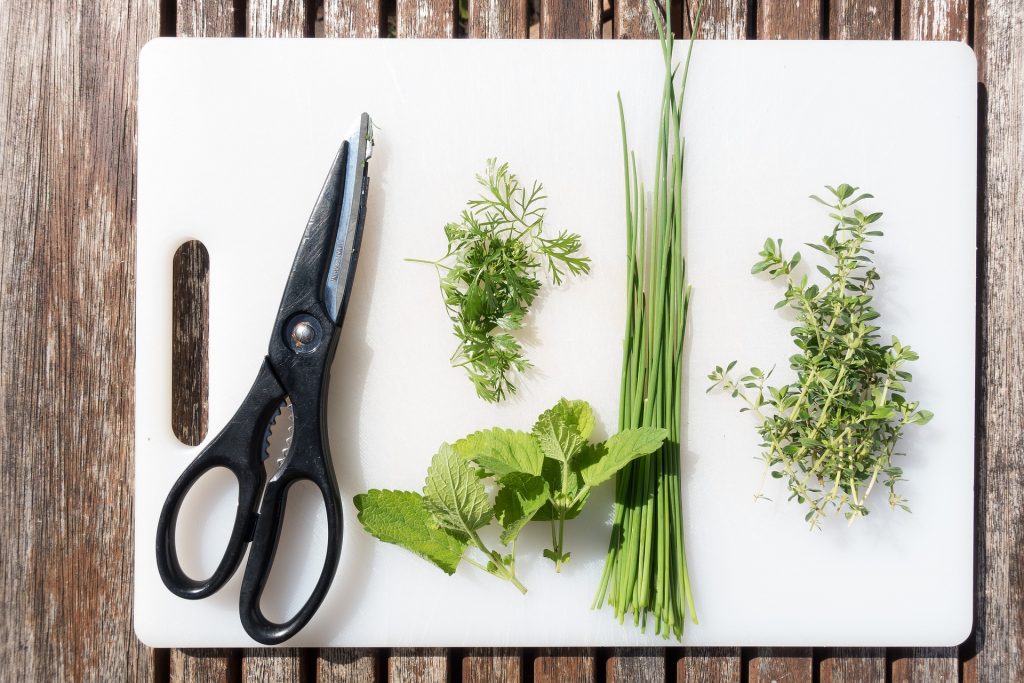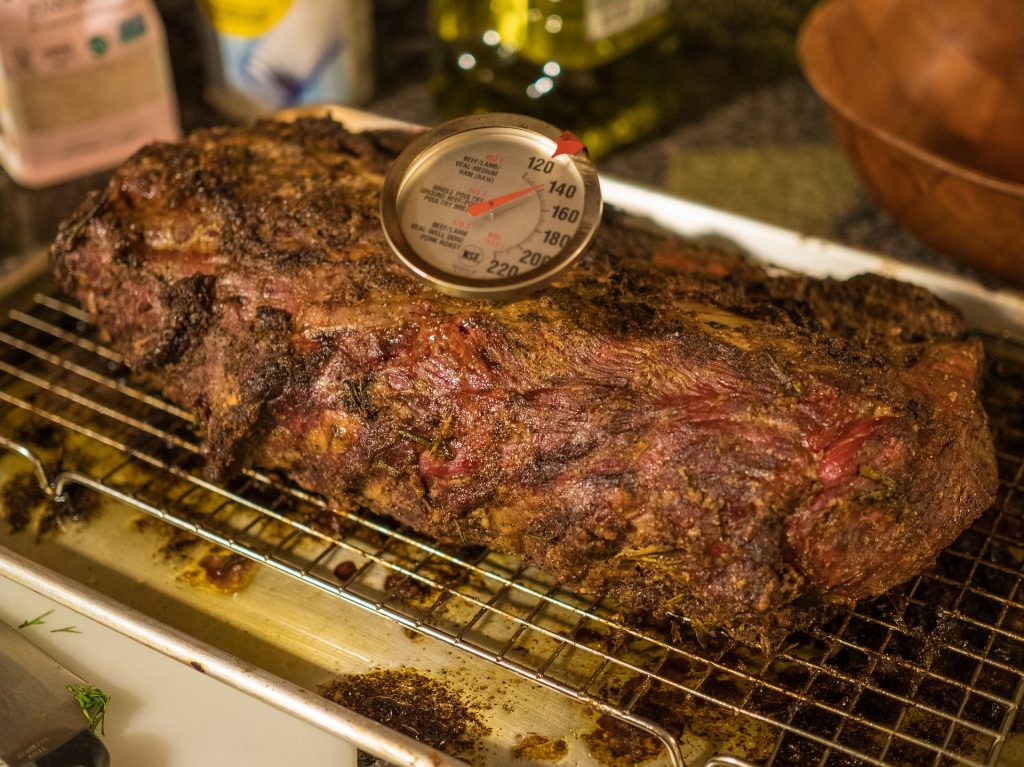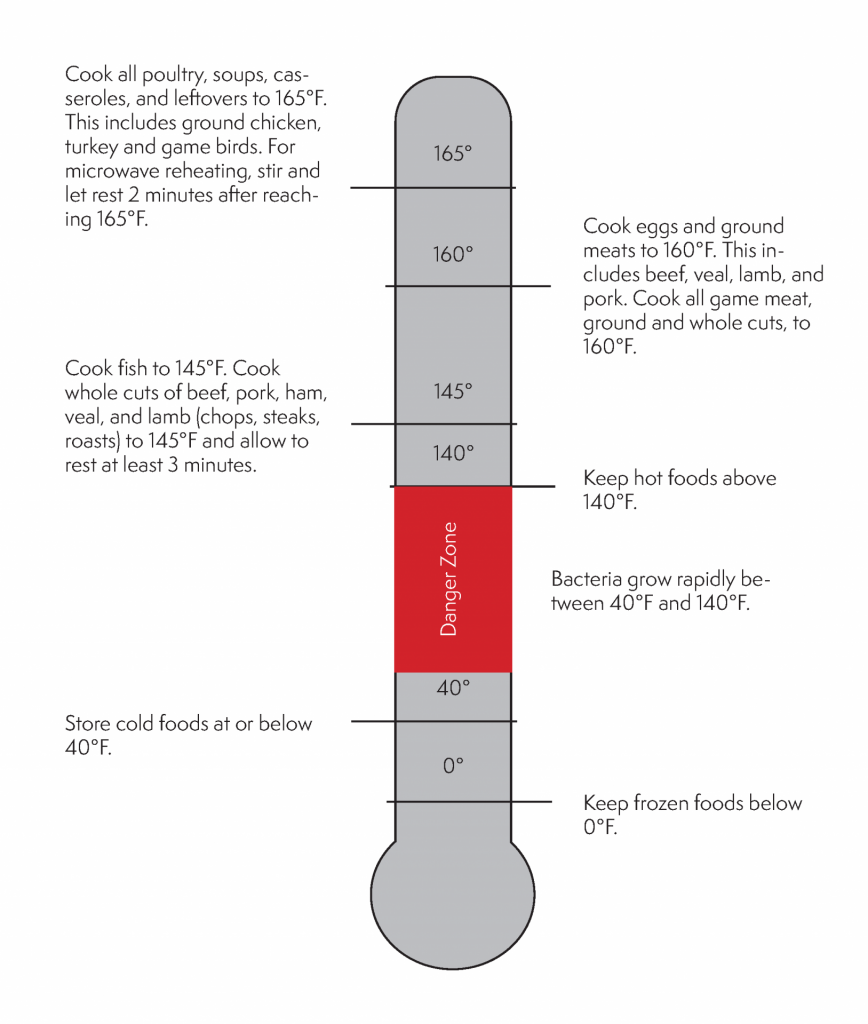Food Safety
Like having the ingredients and tools you need, food safety is another key element of successful cooking. Keeping your kitchen clean and handling food safely reduces the chance of spreading bacteria that causes foodborne illness. To do this, follow the four steps for a safe kitchen. These four steps come from Fight BAC by the Partnership for Food Safety Education.
Clean
The first line of defense against foodborne illness is keeping a clean kitchen. This includes thoroughly washing utensils and cooking surfaces during the preparation and cooking process, washing hands before and after touching food, and properly washing produce. Keep these tips in mind for a clean kitchen.

Sanitizing Solution for Kitchen Surfaces
• Fill spray bottle with 2 cups cool water.
• Add 1/2 teaspoon regular bleach (not ultra bleach).
• Attach the lid tightly to the bottle and shake.
• Wash and rinse counter tops or cutting boards first, then spray with the solution. Allow to air dry or wipe dry with a clean paper towel.
• Make a fresh bottle of solution weekly to ensure effectiveness.
• Wash hands for 20 seconds with warm water and soap before and after touching food.
• Wash hands after touching raw meat, poultry, fish, eggs, and after using the bathroom, changing diapers, and touching pets.
• Keep your work area clean and wash counter tops with hot soapy water as you cook.
• Use hot soapy water to clean dishes, cutting boards, utensils, tables, and counters.
• Use clean dishes (not used in cooking) to serve food.
• Wash taste-testing utensils after each use.
• Rinse fruits and vegetables under cool running water before eating, peeling, or cutting.

Separate
Keep raw meat, poultry, seafood and eggs separate from all other foods. When these raw foods contact other foods, cross-contamination can occur. Cross-contamination is when bacteria from raw foods spread to ready-to-eat foods. These bacteria can make you very sick. Keep these tips in mind to avoid cross contamination.
• Separate raw meat, poultry, seafood, and eggs in your grocery cart, shopping bags, and in the refrigerator.
• Use two cutting boards: one for meat, poultry, and seafood and one for all other foods. Clean cutting boards thoroughly between foods and sanitize using the sanitizing solution from the previous page.
• Never place cooked food on a plate that held raw food and use clean utensils.
Cook
In order for cooked food to be safe, it needs to reach a high enough temperature to kill the bacteria. The right temperature is different for different foods. Using a food thermometer is the best way to make sure that food is hot enough. Keep these tips in mind and use the safe temperatures to cook food to the right temperature.
• Test your food thermometer to make sure it reads temperatures accurately.
• Use a food thermometer to check if foods are done, testing in the thickest part of the food for the safe temperature.
• Keep hot foods hot during potlucks, buffets, and other gatherings.
Food Thermometer Testing
• Fill a large glass with ice and add water.
• Immerse the food thermometer stem at least 2 inches into the ice water, without touching the sides or bottom of the glass.
• Wait 30 seconds.
• Without removing the stem from the ice, hold the adjusting nut under the thermometer head with pliers and turn head so the pointer reads 32°F.
This method works with analog [non-digital] thermometers

Chill
Some foods, like dairy, meat, and pre-cooked foods need to be chilled to keep them safe. The cold refrigerator slows the growth of bacteria that can make you sick, but does not kill them. Keep these tips in mind to properly chill foods.
• Put cold foods away as soon as you get home from the grocery store.
• Don’t let raw meat, poultry, seafood, eggs, dairy, or cut fruits and vegetables sit at room temperature for more than 2 hours.
• Throw away questionable food without tasting.
• Keep the freezer a 0°F or below. Keep the refrigerator at 40°F or below.
• Don’t overfill the refrigerator so that there is enough room for air to circulate.
• When packing food for lunches, picnics, barbecues, and other outings keep cold foods cold using ice, ice packs, and coolers.
• Marinate food in the refrigerator and do not reuse marinades.
• Store large quantities of leftovers in several shallow containers to help the food cool faster in the refrigerator.
• Thaw foods in the refrigerator, cold water, or the microwave, not at room temperature. Cook foods thawed in cold water or the microwave immediately.
Know Safe Temperatures
Cook all poultry, soups, casseroles, and leftovers to 165°F. This includes ground chicken, turkey and game birds. For microwave reheating, stir and let rest 2 minutes after reaching 165°F.
Cook fish to 145°F. Cook whole cuts of beef, pork, ham, veal, and lamb -chops, steaks, roasts – to 145°F, and allow to rest at least 3 minutes.
Store cold foods at or below 40°F.

Cook eggs and ground meats to 160°F. This includes beef, veal, lamb, and pork. Cook all game meat, ground and whole cuts to 160°F.
Keep hot foods above 140°F.
Bacteria grow rapidly between 40°F and 140°F.
Keep frozen foods below 0°F.
